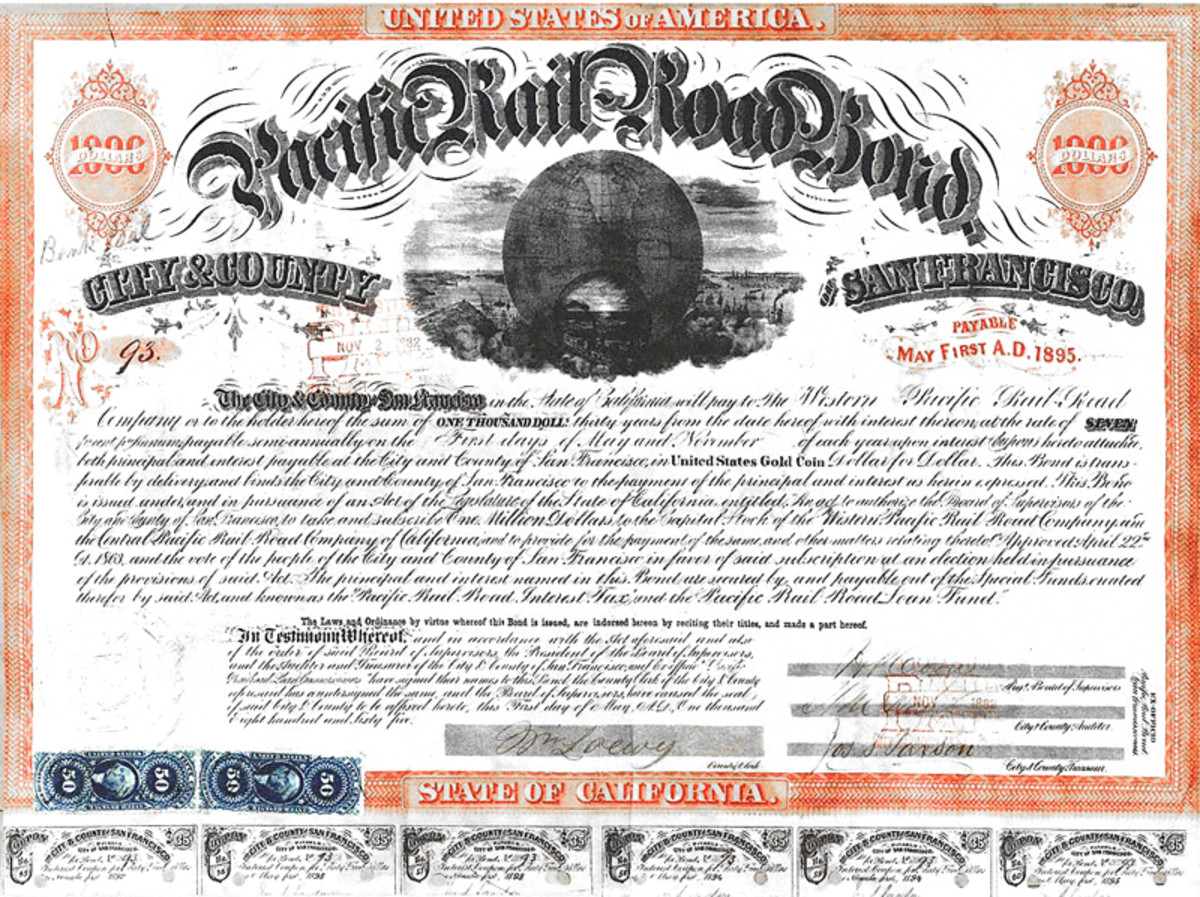How to Fight Inflation
The US inflation rate for the 12 months ending in June 2012 was only 1.7%. Does that mean you don’t need to worry about inflation? Hardly. Eventually, the recession will end, and inflation will revert back to its long-term average of about 3%. If inflation were to remain at 3% for 10 years, the purchasing power of each $100 you own would be reduced to only $75. Here are 10 ways to fight inflation.
I Bonds
Series I Savings Bonds, or I Bonds, are savings bonds issued by the US Treasury. They are designed to provide a real rate of return above inflation. The earnings rate of an I Bond is a combination of two rates: a fixed rate and an inflation rate. The fixed rate is a fixed rate of return that applies for the life of the bond. It is determined by the Secretary of the Treasury, and is guaranteed to always be greater than or equal to 0.00%. The inflation rate is based on changes in the Consumer Price Index for All Urban Consumers (CPI-U), announced each May and November. The fixed rate and inflation rate are combined into a composite rate that determines the bond’s earnings rate every six months. This composite rate guarantees that I Bonds will provide a rate of return that matches or exceeds the rate of inflation.
As announced on May 1, 2012, the earnings rate for I Bonds is currently 2.20%, which includes a fixed rate of 0.00%. The fixed rate of 0.00% means I Bonds bought today should merely match the rate of inflation over their lifetimes. The inflation rate for these I Bonds is 2.20%, which was the annualized rate of inflation as measured by the CPI-U for the six month period from September 2011 to March 2012.
Investors purchase I Bonds directly from the US Treasury at www.treasurydirect.gov. There are no fees.
I Bonds are an ultra-safe way to fight inflation since they are designed to provide a real rate of return above inflation, and are guaranteed by the US government. However, as shown by today’s 0.00% fixed rate, I Bonds are unlikely to provide earnings that exceed the rate of inflation by much. Indeed, I Bonds bought today will merely match the rate of inflation over their lifetimes due to their fixed rate of 0.00%. Thus, while I Bonds are useful as part of an inflation-fighting investment portfolio, investors will want to look at other inflation-fighting investments in order to earn returns that actually exceed inflation.
Treasury Inflation-Protected Securities (TIPS)
Treasury Inflation-Protected Securities (TIPS) are marketable securities also sold by the US Treasury. The principle of a TIP is adjusted based on the Consumer Price Index for All Urban Consumers (CPI-U). The principal increases to reflect rises in CPI-U (inflation), and decreases to reflect falls in CPI-U (deflation). TIPS also pay interest at six month intervals, at rates set when the TIPs are purchased. The rate applies to the adjusted principal of the TIP, so the payments can vary from one period to the next. At maturity, the investor receives the higher of the adjusted or original principal, which protects against deflation.
There are several ways to purchase TIPS, each with its own advantages and disadvantages. Investors can purchase newly-issued TIPS directly from the US Treasury at www.treasurydirect.gov. TIPS are issued with maturities of 5, 10 or 30 years, and their interest rates are set through an auction process. Alternatively, TIPS can be bought in the secondary market after issuance through a brokerage account. The price typically includes a markup, and some brokers also charge a commission on top of the markup. The price of TIPS bought in the secondary market is variable, and depends on the particular TIP bought.
Investors can sell their TIPS by holding them until maturity, at which point they’ll receive the higher of the TIPS’ original principal or their adjusted principal. Or, investors can sell their TIPS in the secondary marketplace before they reach their maturity date, with the price being set by the marketplace.
Alternatively, investors can purchase TIPS indirectly through Exchange-Traded Funds such as the iShares Barclays TIPS bond ETF (ticker symbol “TIP”), or through a mutual fund run by a financial institution such as Fidelity Investments or Vanguard. The prices of these ETFs or mutual funds will vary day by day.
TIPS are also a relatively safe way to buy inflation-protected securities since they are guaranteed by the US government. However, unless you hold them to maturity, their prices will vary in the marketplace, and you may experience capital losses on your TIPS investment, especially in a rising interest-rate environment. There are also certain tax disadvantages to holding TIPS in non-retirement accounts.
High Yield Bonds
Bonds are often vulnerable to inflation, since the present value of their interest payouts decreases as inflation increases. However, high yield bonds can provide protection against inflation because their value often depends more on the health of the corporate entity that issued them. If the reason for an increase in inflation is that the economy is heating up, the risk that the company that issued a high yield bond will be unable to pay it back will often decrease, thereby causing the price of the bond to rise. Of course, there is a risk that the company that issued a particular high yield bond will be unable to pay it back no matter how good the economy gets, in which case the bond investors will likely lose money.
High yield bonds can be bought through brokers and other institutions, and investors may choose to buy individual bonds or high-yield bond funds. High-yield bond funds have the advantage of providing more diversification than that available from buying individual bonds for all but high net worth investors.
Ultrashort-Term Bonds
Another way to protect your portfolio from inflation is to buy ultrashort bonds or bond funds. In a rising rate environment, the short duration of the bonds will mean that they will mature quicker, and the cash received from the bonds as they mature can be quickly re-invested in new bonds carrying higher rates.
Dividend-Paying Stocks
Dividend-paying stocks, especially those with a long history of increasing their dividends over time, can provide a great deal of inflation protection since corporate earnings can handily outpace inflation rates. One great place to look for companies with a history of increasing dividends is the Standard & Poor’s Dividend Aristocrats index, which includes companies in the S&P 500 index that have increased their dividends for at least 25 consecutive years. The 2012 Dividend Aristocrat list has 50 such companies, including well-known names such as AT&T, Inc. (T), Sysco Corporation (SYY), and Medtronic (MDT).
Floating-Rate Securities
Floating-rate securities have interest rates that periodically reset, or “float”, with the new rate being set based on a representative interest index. The yields offered on floating-rate securities are usually higher than for comparable shorter-term maturity securities. In a rising rate environment, the new rates will rise, and the floating-rate securities will pay higher interest rates.
Individual investors can easily purchase floating-rate mutual funds, such as the Fidelity Floating-Rate High Income fund (ticker symbol “FFRHX”) offered by Fidelity Investments. The 30-day yield on the FFRHX floating-rate fund was a relatively high 3.61% as of July 23, 2012.
Inflation-Adjusted Immediate Annuities
With an immediate annuity, an investor makes a lump-sum payment to an insurance company in exchange for regular income payments for the rest of his life. Some insurance companies offer inflation adjustment riders. If an investor purchases such a rider, the regular income payments will be adjusted for inflation. Alternatively, the investor can purchase an annual increase rider of 1%, 2%, 3% or some other percentage, which will cause the income payments to increase by that percentage each year.
Since the inflation or annual percentage increase rider can result in substantially higher payments as the annuitant gets older, the initial amount of the regular income payments tends to be much lower than for immediate annuities without these inflation protections. However, the riders can still be attractive since they help insulate annuitants from one of their biggest lifetime financial risks: long-term inflation.
Inflation-adjusted immediate annuities are available, for example, from Vanguard. Vanguard customers have access to a convenient tool for finding annuity prices that’s run by Hueler Investment Services.
Commodities
In a rising-rate environment, the prices of commodities would also be expected to rise. Thus, investors can often insulate themselves from inflation by buying the commodities themselves, or the companies which own, mine or raise the commodities. Different types of commodities include grains (e.g., corn, soybeans, wheat, rice, oats), energy (e.g., crude oil, heating oil, unleaded gas, natural gas), soft markets (e.g., cotton, cocoa, coffee, sugar, lumber, orange juice), and livestock (e.g., live cattle, lean hogs).
Individuals can purchase commodities themselves through a large variety of ETFs or mutual funds, such as the copper miners ETF (COPX) or the timber ETF (WOOD). Alternatively, individuals investors can buy companies that own, mine or raise the commodities, such as Alcoa (AA) or Potash Corp. (POT).
Real Estate
While real estate prices have softened with the bursting real-estate bubble, real estate is another hard asset whose price tends to move up with rising inflation rates (at least in the long term). Some investors buy physical real estate assets such as apartment buildings, storage businesses or hotels. However, such assets typically require too much hands-on management for most investors. As an alternative, investors can purchase real estate investment trusts (REIT) to get exposure to this inflation-fighting asset class.
Precious Metals
Precious metals such as gold or silver are actually a subclass of commodities. In inflationary environments, the price of precious metals tends to increase as they maintain their real value.
Individual investors can invest in physical gold or silver by buying government-issued coin or bullion. Such physical assets, however, must be stored in a secure location such as a bank safe. Investors may also need to purchase insurance. As an easier alternative, investors can purchase ETFs focused on these metals, such as the gold ETF (GOLD) or silver ETF (SLV). Investors should be aware that there is typically a tracking error between the value of these ETFs and the value of their underlying physical commodity. Investors should also be award that the prices of gold, silver and other commodities can be volatile.
Conclusion
With the US inflation rate at a tame 1.7%, fighting inflation doesn’t seem like a priority. But as with many problems, it can be easier to take pro-active steps to ward off the impact of inflation before it heats up. By using these 10 ways to fight inflation, you can rest easier knowing that the purchasing power of your savings should be preserved even when inflation starts to rear its ugly head again.







